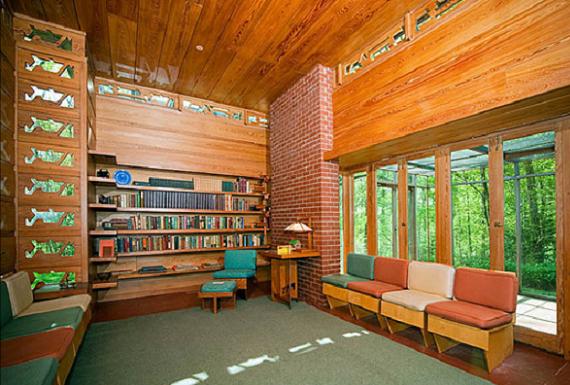
In 1936, when the United States was in the midst of economic depression, the American architect Frank Lloyd Wright he developed a series of houses which he called Usonia.
These houses were designed to control costs and had no attics, floors, and little decoration. The word Usonia is short in the United States of North America. Frank Lloyd Wright, aspired to create a American style fair and democratic, which was within the reach of ordinary people.

In that year, then, when his Cascade house (also known as the Kaufmann Residence) led him to win the cover of Time, Wright began working on a series of single storey houses, smaller residences by American standards, which are known as «Usonian houses».
These drawings reflect his desire to create a unique American style, but also his interest in creating well-designed homes that average Americans could afford.
The clients of his former prairie houses were very wealthy, by contrast, the clients of the Usonia houses were decidedly middle class. In design, Wright rejected the formality of earlier Victorian houses: the Usonian had no living rooms They were formal, but they were a reflection of much more casual family life, which was the direction American society was taking.
Other characteristics common to Usonian houses were radiant heating systems introduced by Wright, filled with hot steam pipes that ran through the foundry to heat their homes from the bottom up. In order to save on construction costs, the houses were arranged in a grid that allowed a greater standardization of the pieces and materials such as bricks, concrete and wood were left raw, unpainted.
Many of the characteristics of these houses, especially in the design of the open plan in the first place, in collaboration with the exterior, and the strong horizontal lines, have had enormous influence on the first ranches that soon flourished in any American suburb.
Today, many of Wright's Usonia homes are still inhabited by families of their original owners. When entering the market they are valued in millions of dollars. It is a reality far removed from Wright's original intentions for accessibility, but it is also a testament to his genius in designing lasting beauty and the convenience of simple houses built by the common man.
More information - American colonial style
Source - arredarecasa-blog.it